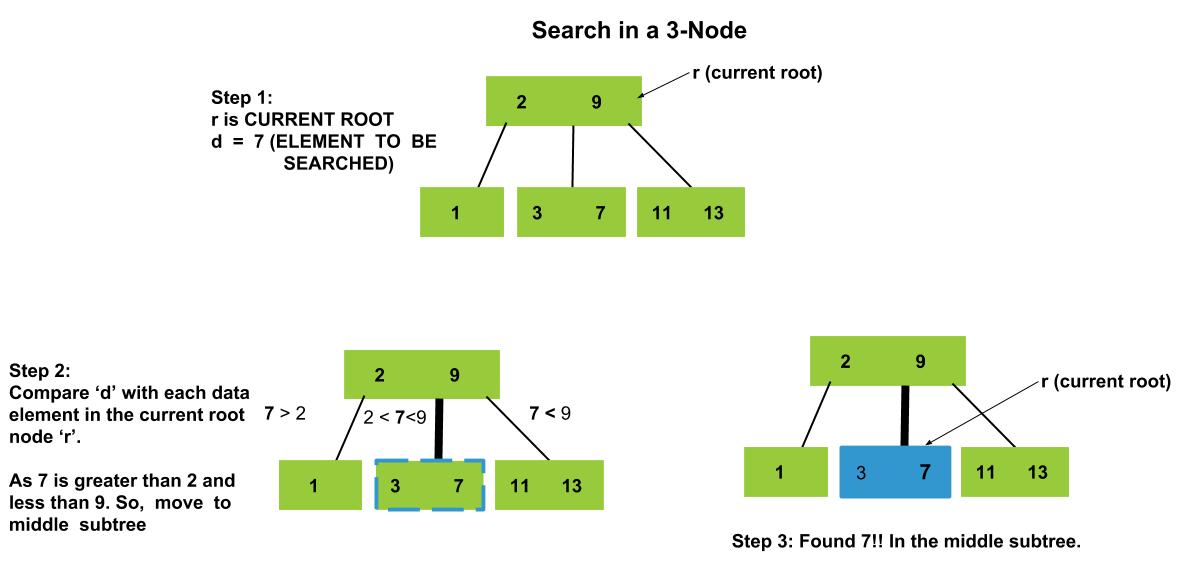2-3 Tree
Intuition
Searching for an item in a 2–3 tree is similar to searching for an item in a binary search tree. Since the data elements in each node are ordered, a search function will be directed to the correct subtree and eventually to the correct node which contains the item.
Search in a 2-Node

Search in a 3-Node

Algorithm
- Let T be a 2–3 tree and d be the data element we want to find. If T is empty, then d is not in T and we're done.
- Let r be the root of T.
- Suppose r is a leaf.
- If d is not in r, then d is not in T and we're done.
- Otherwise, d is in T. In particular, d can be found at a leaf node. We need no further steps and we're done.
- Suppose r is a 2-node with left child L and right child R. Let e be the data element in r. There are three cases:
- If d = e, then we've found d in T and we're done.
- If d < e, then set T to L, which by definition is a 2–3 tree, and go back to step 2.
- If d > e, then set T to R and go back to step 2.
- Suppose r is a 3-node with left child L, middle child M, and right child R. Let a and b be the two data elements of r, where a < b. There are four cases:
- If d is equal to a or b, then d is in T and we're done.
- If d < a, then set T to L and go back to step 2.
- If a < d < b, then set T to M and go back to step 2.
- If d > b, then set T to R and go back to step 2.
